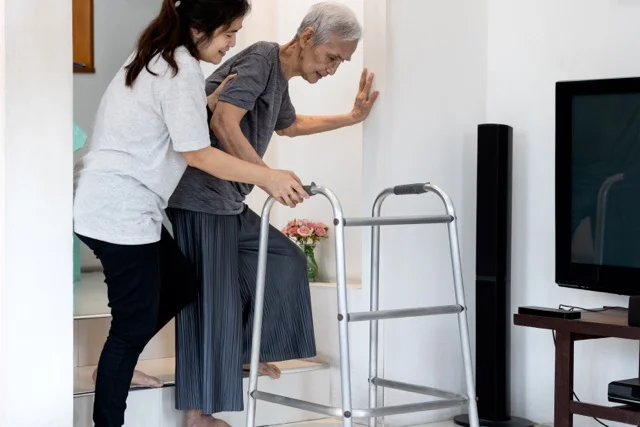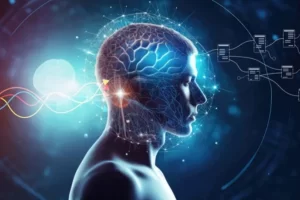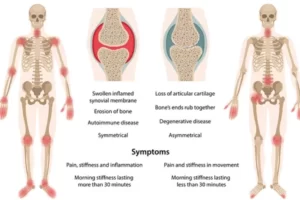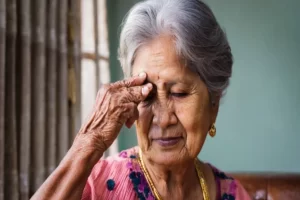Best Physiotherapy for Balance Problems You Can Trust
Trust “Best Physiotherapy for Balance Problems” for tailored rehabilitation, integrating evidence-based techniques to maximize recovery and restore independence. Our compassionate care and dedicated support aim to guide our patients towards improved mobility and quality of life.
Best Balance Problems physiotherapy Doctors in Delhi, India

Physiotherapy for Balance Problem
BalanceImpairment Physiotherapy in Delhi
Balance impairment can arise from various factors, such as neurological conditions, musculoskeletal issues, or vestibular dysfunction, leading to increased fall risk and decreased mobility. Rehabilitation strategies target underlying causes through exercises, balance training, and proprioceptive techniques to enhance stability and prevent falls. Multidisciplinary approaches often incorporate physical therapy, occupational therapy, and sometimes assistive devices to optimize balance and restore confidence in daily activities.
What is Balance Impairment
Balance impairments are disruptions in equilibrium, resulting from neurological, musculoskeletal, or vestibular issues, leading to increased fall risk and decreased mobility, often requiring rehabilitation interventions for improvement.
INNER EAR DISORDERS

INNER EAR DISORDERS, including BPPV, vestibular neuritis, and Ménière’s disease, disrupt balance and cause dizziness or vertigo due to vestibular system dysfunction, impacting equilibrium and necessitating management strategies.
NEUROLOGICAL CONDITIONS

NEUROLOGICAL CONDITIONS such as stroke, Parkinson’s disease, MS, or peripheral neuropathy disrupt balance by affecting sensory processing and movement coordination, leading to instability and requiring targeted rehabilitation interventions for improvement.
MUSCULOSKELETAL ISSUES

MUSCULOSKELETAL ISSUES like arthritis, muscle weakness, or orthopedic injuries disrupt balance by impairing mobility and coordination, posing challenges in maintaining stability and necessitating rehabilitation interventions for improvement.
VISUAL IMPAIRMENT

VISUAL IMPAIRMENTS like cataracts or glaucoma compromise balance by affecting depth perception and visual cues, impacting spatial orientation and contributing to balance problems that may require rehabilitation interventions for improvement.
AGE-RELATED CHANGES

AGE-RELATED CHANGES, including declines in muscle strength, joint flexibility, and sensory function, heighten fall risk and balance issues in older adults due to physiological alterations, necessitating targeted interventions for fall prevention and balance improvement.
ADDRESSING BALANCE PROBLEMS OFTEN REQUIRES A COMPREHENSIVE ASSESSMENT BY HEALTHCARE PROFESSIONALS, INCLUDING PHYSICIANS, PHYSIOTHERAPIST SPECIALIST IN BALANCE REHABILITATION AND SPECIALISTS IN NEUROLOGY OR OTOLARYNGOLOGY. TREATMENT MAY INVOLVE
EXPLORE THE VESTIBULAR AND BALANCE REHABILITATION THERAPY
A COMBINATION OF INTERVENTIONS, INCLUDING MEDICATION MANAGEMENT, VESTIBULAR REHABILITATION, STRENGTH AND BALANCE EXERCISES, ASSISTIVE DEVICES, AND ENVIRONMENTAL MODIFICATIONS, TAILORED TO ADDRESS THE UNDERLYING CAUSE AND IMPROVE OVERALL BALANCE AND STABILITY.
Symptoms Of Balance Impairment
The Symptoms Of Balance Impairment Can Be Diverse, And Individuals May Experience A Combination Of The Following:
- Dizziness: This often manifests as a sensation of lightheadedness or spinning. The feeling can be fleeting or persistent.
- Unsteadiness: Balance impairment typically results in difficulties maintaining balance, particularly when walking or standing still. This unsteadiness can affect daily activities and increase the risk of falls.
- Frequent Falls: One of the most significant concerns for those with balance impairment is the increased risk of falling. These falls can happen without any apparent cause and may result in injuries.
- Vertigo: Vertigo is characterized by a false sensation of spinning or movement, often accompanied by nausea and vomiting.
Treatment of BALANCE IMPAIRMENT
Treatment of head injuries involves rest, pain management, monitoring for complications, and in severe cases, surgery. Rehabilitation focuses on restoring function and adjusting to any lasting impairments.
Physiotherapy Treatment for Balance Impairment
Physiotherapy for balance impairments involves tailored interventions such as exercises to improve strength, flexibility, and proprioception, balance training, vestibular rehabilitation, and gait training. Multidisciplinary approaches aim to enhance stability and mobility, reducing fall risk and improving overall function.
Technology, including Virtual Reality, enhances balance rehabilitation by providing immersive environments for interactive and personalized therapy interventions, improving outcomes.
Role of Physiotherapy in Balance
In balance rehabilitation, physiotherapy plays a crucial role by employing exercises, balance training, and specialized techniques to enhance stability, coordination, and mobility. By addressing underlying impairments, physiotherapists aim to reduce fall risk and improve overall functional independence and quality of life for individuals with balance impairments.
Physiotherapy & Rehabilitation
What Includes in Physiotherapy and Rehabilitation for Balance Impairment
The treatment of balance impairments typically involves a multidisciplinary approach aimed at addressing the underlying cause of the balance problem and improving overall stability and mobility. Here are some common strategies and interventions used in the treatment of balance impairments:
- MEDICAL MANAGEMENT: If balance problems are caused by underlying medical conditions such as inner ear disorders, neurological conditions, or medication side effects, medical management may be necessary. This may include medication adjustments, vestibular suppressants, or treatments targeted at specific underlying conditions.
- PHYSIOTHERAPY: Physiotherapists play a crucial role in the rehabilitation of balance impairments. They can design individualized exercise programs focused on improving strength, flexibility, coordination, and proprioception. Balance training exercises may include standing, walking, stepping, reaching, and functional activities tailored to the individual’s specific needs and goals.
- VESTIBULAR REHABILITATION: Vestibular rehabilitation therapy (VRT) is a specialized form of physical therapy designed to address balance problems related to inner ear disorders or vestibular dysfunction. VRT aims to desensitize the vestibular system, improve gaze stability, and promote adaptation to vestibular deficits through a series of exercises and maneuvers targeting the vestibulo-ocular and vestibulospinal reflexes.
- GAIT TRAINING: Gait training focuses on improving walking patterns and mobility, which are essential components of balance control. Gait training exercises may include walking on different surfaces, changing directions, varying speeds, and practicing functional tasks such as stair negotiation or obstacle avoidance.
- STRENGTH AND CONDITIONING: Strengthening exercises targeting the muscles of the lower extremities, core, and trunk can help improve stability and balance control. Resistance training, balance boards, stability balls, and functional weight-bearing exercises are commonly used to enhance muscle strength, endurance, and postural control.
- PROPRIOCEPTIVE TRAINING: Proprioception refers to the body’s ability to sense its position and movement in space. Proprioceptive training exercises focus on improving proprioception through activities that challenge balance, coordination, and spatial awareness. These may include balance beams, foam pads, wobble boards, and sensory integration activities.
- ASSISTIVE DEVICES: Assistive devices such as canes, walkers, or orthotic devices may be recommended to provide external support and enhance stability during walking and functional activities, especially for individuals with significant balance impairments or mobility limitations.
- ENVIRONMENTAL MODIFICATIONS: Making modifications to the home or work environment can help reduce fall risks and improve safety for individuals with balance impairments. This may include removing tripping hazards, improving lighting, installing handrails or grab bars, and using non-slip surfaces.
- EDUCATION AND FALL PREVENTION STRATEGIES: Education plays a critical role in empowering individuals with balance impairments to manage their condition effectively and reduce the risk of falls. Educating patients and caregivers about fall prevention strategies, safe movement techniques, and environmental modifications can help minimize fall risks and promote independence.
- FOLLOW-UP AND MONITORING: Regular follow-up assessments and monitoring are essential to track progress, adjust treatment plans as needed, and address any emerging issues or concerns. Healthcare providers may collaborate closely with patients to evaluate treatment outcomes, optimize interventions, and promote long-term success in managing balance impairments.
By combining these approaches in a comprehensive and coordinated manner, healthcare professionals can effectively address balance impairments, improve functional abilities, and enhance overall quality of life for individuals with balance problems. Tailoring interventions to the specific needs and goals of each individual is key to achieving optimal outcomes in balance rehabilitation.
Our Treatment Process
Committed To Keep People Healthy & Safe
Our treatment process begins with a thorough assessment, followed by the creation of a personalized plan tailored to your needs. Through active rehabilitation, incorporating various evidence-based techniques, we work to promote healing and improve function. Continuous support and guidance are provided to ensure long-term success.
We start by having a thorough conversation with you about your medical history and any issues you’re experiencing. This helps us understand your unique situation.
We use state-of-the-art software and technology to analyze how your body moves and functions. This gives us a detailed picture of what might be causing your discomfort.
Based on what we find during the assessment, we create a personalized plan just for you. Our goal is to help you achieve specific outcomes, whether it’s reducing pain, improving mobility, or something else.
During your sessions with us, we use a combination of advanced technology and hands-on techniques to address your needs. This might include using special equipment or providing manual therapy to target problem areas.
We keep a close eye on how you’re doing throughout your treatment. By regularly checking your progress, we can make sure you’re on the right track and make any necessary adjustments to your plan.
Once you’ve made significant progress and reached your goals, we’ll guide you through a final session. Here, we’ll provide you with a customized digital exercise program that you can continue at home.
Even after your sessions with us are complete, we’re still here to support you. We offer virtual and online follow-up appointments to check in, answer any questions you may have, and provide ongoing guidance as needed.
At Best Physiotherapy Centre inDelhi for Balance Problems We Follow Best Practices
Why Choose Us
We offer personalized care, crafting customized treatment plans based on your unique needs and goals. With expertise in physiotherapy and a holistic approach to healing, our team ensures comprehensive care that addresses both physical and emotional aspects of recovery.
- Personalized Care
- Experienced Professionals
- Expertise & Best Practices
- Holistic Approach
- Latest Technology
Meet Dr. Dharam Pandey and Team
Leaders in Advanced Neurological Rehabilitation
At Dr. Dharam Pandey and Team, we are dedicated to revolutionizing Neurological Rehabilitation through cutting-edge technology, personalized care, and a commitment to delivering exceptional outcomes. Led by Dr. Dharam Pandey, a renowned expert in neurorehabilitation, our team is equipped with state-of-the-art facilities and staffed by highly qualified professionals. We specialize in outcome-based functional task training therapy, harnessing the power of advanced technology to optimize recovery for patients.
State-of-the-Art Facilities
Our facilities are equipped with the latest technology and amenities to create a conducive environment for rehabilitation and healing. From spacious therapy gyms to private treatment rooms, we prioritize comfort, safety, and accessibility for our patients.
EXPERTISE
Led by Dr. Dharam Pandey, our team comprises highly skilled professionals with extensive experience in stroke rehabilitation.
PERSONALIZED CARE
We believe in a patient-centered approach, tailoring treatment plans to address the individual needs and goals of each patient.
ADVANCED TECHNOLOGY
We harness the power of advanced technology to deliver innovative rehabilitation solutions and optimize outcomes.
COMPASSIONATE SUPPORT
We provide compassionate, supportive care every step of the way, empowering patients to achieve their full potential.
Best Physiotherapy FOR BALANCE PROBLEMS
At Dr. Dharam Pandey and Team, we are committed to redefining the standard of care in neurological rehabilitation. With our expertise, state-of-the-art technology, and unwavering dedication to patient-centric care, we strive to inspire hope, restore function, and improve quality of life for head injury survivors. If you or a loved one is seeking specialized rehabilitation services, we invite you to experience the difference at Dr. Dharam Pandey and Team.
Call Today
+91-9818911195 +91-9818910029


